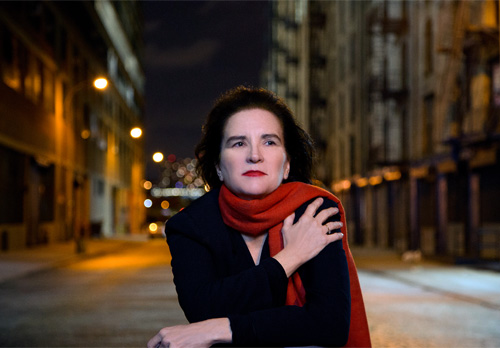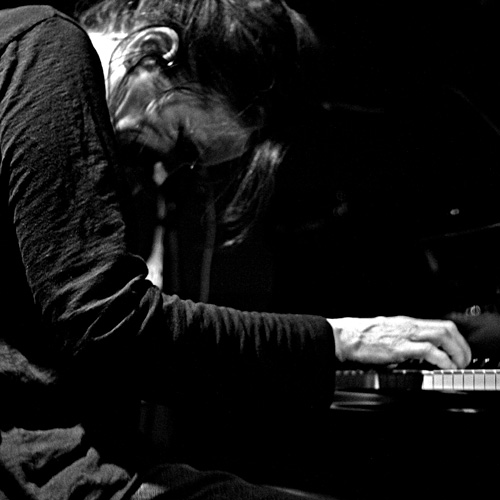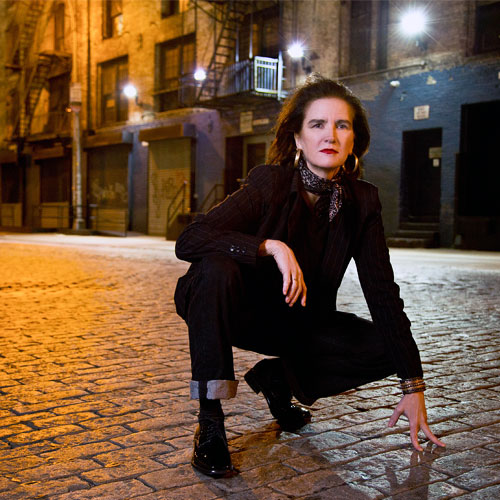Patricia Barber SMASH!
Phto By Jimmy Katz
One song, “Missing” – perhaps the album’s most indelible portrait of heartache – came about in an unusual way: “This was a commission, I guess you could call it. A woman sent me a letter and her story, and a very small check, and asked if I could turn it into a song. It was sort of an outrageous request, but it really hit me, so I wrote it; it was my idea to take the story through the four seasons. In some ways, it’s the sleeper of the record. When I play this in concert, a lot of people cry at this one.”
The other songs on Smash represent the fruit of Barber’s decision to write what she calls a “syllabic song series”; these pieces resulted from a disciplined framework, based on the number of beats in each poetic line. (For instance, “The Swim” consists entirely of two-syllable lines; “Spring Song” has three such phonemes per line; “The Wind Song,” six.) “I studied the songwriters, but now I just study the poets,” she explains. “I’m trying to make the poetry of a finer order. But I still need to rhyme, because rhyme is rhythm, and rhythm is music.”
Audiophiles will be especially glad to know that Smash reunites Barber with her long-time recording engineer Jim Anderson (with whom she first worked in 1994, on her Premonition Records debut Café Blue.) Anderson – who is Professor of Recorded Music at New York University’s Tisch School for of the Arts – has again captured Barber’s music with the clarity and presence that led Stereophile Magazine to label Café Blue a “Record To Die For.” HDTracks and Mastered for iTunes versions of Smash are also available.
Photo By Jammi York
After her long association with Premonition and then Blue Note Records, Barber self-released her two most recent albums – recorded at Chicago’s legendary Green Mill, her weekly showcase for more than two decades – and had no plans to sign with anyone else at this point in her career. “I didn’t have a contract, or even a recording in mind,” she states. “I assumed that when I had a group of ten or so new songs I would probably put it out myself.” Halfway through this process, Barber received an offer from Concord, which she promptly turned down: “I was really enjoying the freedom of not having a label, especially in this environment, and just doing what I always do – trying to advance myself musically, practicing a lot, and locking in on what I consider a really good band.”
But the persistence of Concord producer Nick Phillips won out. “He came to see me, and he reminded me so much of Bruce Lundvall,” Barber recalls, referring to the former Blue Note president with whom she worked closely. “I had been grieving the loss of that professional relationship. And then Nick mentioned that he has great respect and admiration for Bruce. So we hit it off personally, and that’s what it takes for me.”
That, and the chance to take her time – to read poetry, practice piano, and do some gardening on a tract of farmland she owns in Michigan, a welcome getaway from city life in Chicago. That’s how Barber’s ideas take root and bloom. She remains an electrifying performer, but performance is not the most important aspect of her art. “My favorite part is the internal part – the research,” she points out. “All the interesting stuff happens inside your head and at the piano.”
Photo By Jimmy Katz
Fortunately, those of us not in Patricia Barber’s head or at her piano still get to enjoy the fruits of that labor.
|
|

|

Europe |
LATEST GALLERY IMAGES

Snow Patrol 2025 
Freya Ridings 2025 |
|
|




